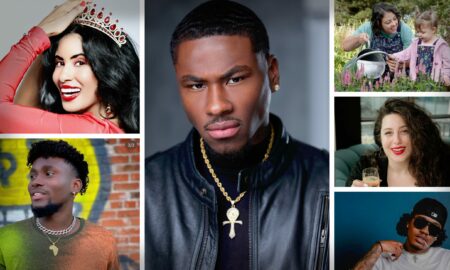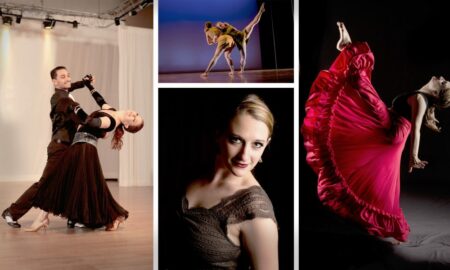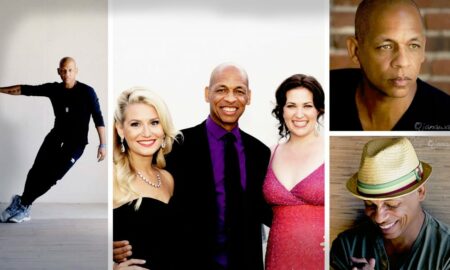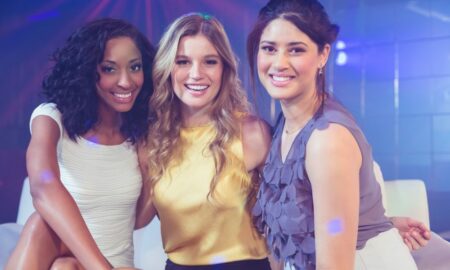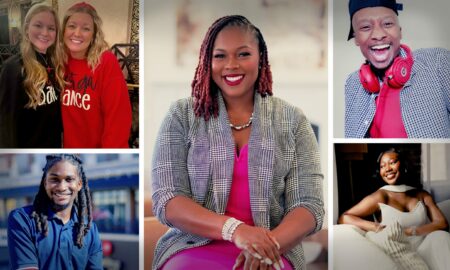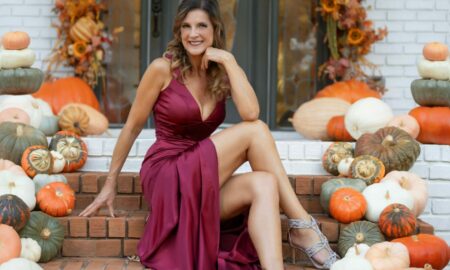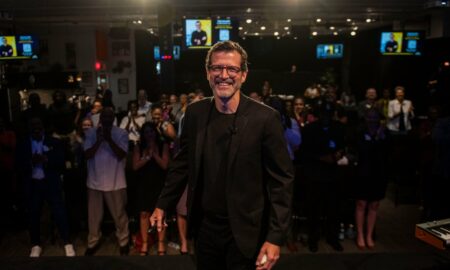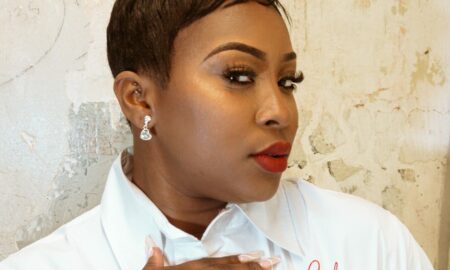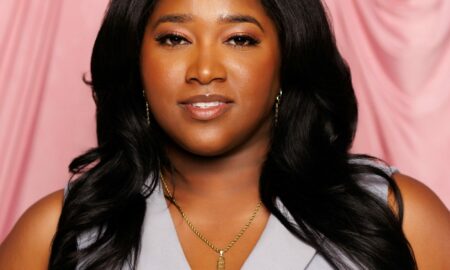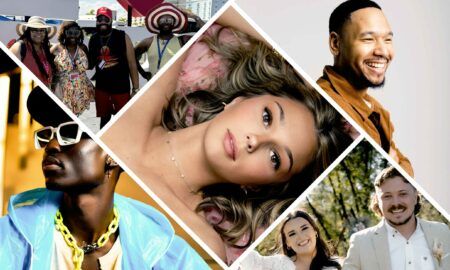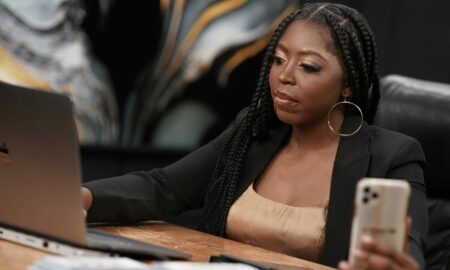

Today we’d like to introduce you to Bria Goeller.
Thanks for sharing your story with us Bria. So, let’s start at the beginning and we can move on from there.
I’m an artist and an educator, and I’m interested in connection – pursuing it, documenting it, and facilitating it.
My life has largely, thus far, been an exploration of different ways of processing the world. I have always been really creative and felt a lot, and that’s all I think art is: creative expression. I’ve done visual art since I was a kid. I also wrote a lot – mostly fiction when I was younger, but now more narrative and poetry. I was able to delve into film and graphic design towards the end of high school when I learned how to use the Adobe Suite. (Before that, I’d make graphics using Microsoft Word or Paint, and I even tried some video/photo projects in PowerPoint.) Music has always been a companion for me, as well. I grew up a classically trained pianist but later started using chords and guitar tabs instead of reading music. I teach myself different instruments every now and then (guitar, ukulele, a little bit of cello, kalimba). I’m also really interested in electronic audio engineering. One of my favorite things to do is to find hidden pianos around Atlanta and play them clandestinely. I see all of those mediums, however different they may appear, as part of the same quest to think and express. Art isn’t a hobby or a practice to me. It’s a way of engaging with life and other people.
I approach education in much of the same way – trying to discover different modes of thinking, rather than acquiring knowledge. In college, I chose my majors (Interdisciplinary Studies and English/Creative Writing) to allow me the space to draw connections and create stories from the connections I drew. I always joke that I “chose the majors that didn’t make me choose,” but I think there’s something very important about being able to look at the world through disparate lenses.
Disciplines are a bit like cultures. They’re systems of thinking that govern the way we interpret what we encounter, and I want to explore as many as I can. A large part of my life has been exploring different cultures, from Congolese baby showers to Scandinavian hygge nights. Most recently, I spent six weeks with the exiled Tibetan Buddhist monk communities living in India. But I’m less interested in any one of those cultures individually as I am in what happens when we put them together – the challenges and contradictions that arise, the similarities that can be drawn, and the areas for collaboration that emerge. Difference can help us discover where our own ways of being fall short, and contrast can reveal a lot about how our own minds work.
Growing up, I was always collecting things – quotes from people around me, phrasings that made me see words differently, nuggets of wisdom I stumbled across, images and color schemes that made my eyes widen, progressions of chords that made my skin tingle, stories that made me laugh or cry – and puzzle-piecing them into new and interesting creations. My creative endeavors have mostly been attempts to assimilate my struggles into the greater realm of collective human suffering. And my academics have largely focused on joining what I learned with what I already knew. This has involved a lot of connecting with other human minds (in person, usually, rather than through books) – those I immediately related to, of course, but particularly those different from me. I’ve learned over the years the importance of vulnerability, and I’ve trained myself to be brave. Finding common ground requires expressing what may have otherwise been hidden.
Professionally, I’m seeking to do just that: connect things and people that may not otherwise be connected. The way I do so is through education and art. I wrote my thesis on how to incorporate arts-based identity development into curricula, arguing that developing identity narratives facilitates expression, and therefore connection. Empathy is about mutual understanding. The better you know and can articulate yourself, the better you can inspire others to do the same, and it’s easy to relate from there. So I’m working to help people understand themselves and each other by opening up and putting the raw parts of themselves on display. Art is a particularly effective way to do this, but it’s certainly not the only way. All it really takes is organized vulnerability. As part of my thesis, I crafted a curriculum around art, identity, and empathy and piloted it with fellow Emory students. During the class, I made the students stare into each other’s eyes for a minute. Things like that.
Great, so let’s dig a little deeper into the story – has it been an easy path overall and if not, what were the challenges you’ve had to overcome?
My biggest challenges have been around vulnerability, which is both counterintuitive and incredibly intuitive. The things we’re afraid of are often the things we’re most interested in (I teach and talk a lot about death for this reason). Being vulnerable with other people has never been easy for me, and it’s always a struggle to put myself out there, although I’ve learned to do it well and, now, do it often. It takes a lot of bravery to let down your walls and trust others with the most delicate parts of you.
I’ve been blessed with a few very good, very close friends. But I spend most of my time alone, and because I’ve always had art to express myself, expressing emotion was something I rarely did with others until recently. Sharing my art has always been a challenge, as well. Making a website was a big step for me and making an Instagram an even bigger one. I still shake every time I read a poem aloud, and I get so sweaty when I play piano anywhere anyone else can hear it.
But, luckily, I realized rather early on that I had been living in a way that was somewhat antithetical to what my true values are as a human. I’ve always lived under the premise: life is full of beautiful stories. Beautiful stuff happens with other humans, though, and I’d been largely denying myself that. I admitted that connection was impossible without empathy, and empathy was impossible without vulnerability. And the only thing holding me back from vulnerability was fear, which is just a manifestation of anxiety. And once I really stomached this, because anxiety is something I deal with by acting directly against, I forced myself to lean in.
I’ve made an active effort to dive into friendship and connection, and, since my sophomore year of college, my purpose has been people (rather than academics or sports, or even art). I made music with others. I shared my art. I let myself cry in front of people. I admitted that I liked cuddles and sought out hugs. I’m now immensely grateful for the connections I’ve developed. A memory I will never forget is sitting on the balcony of my apartment with my two best friends the night before graduation, sobbing as the sky poured buckets of rain on us. Out of gratitude, mostly. But also out of fear. But I think this is a good thing. This wouldn’t be a good life goal if it wasn’t a risk, and I wouldn’t grow from it if it were easy.
I wrote a poem about this, called “Atlanta.”
We’d love to hear more about your work and what you are currently focused on. What else should we know?
When I say “education,” I think it often evokes images of tests and classrooms. But I think a lot of people look at education the wrong way. Not because it’s really confined to school, but because that’s where we’ve been taught to recognize it. And not because we really believe it’s about grades or getting a job, but because that’s what we’re taught to be afraid of: failure, inferiority, unemployment, etc. Grades are important to me, and so is being employed, but I’m also of the firm belief that you cannot be successful if you’re not connected – to yourself, to your purpose, and to the people around you. Education is about preparing for life, and although that can easily be interpreted with a monetary or career-centered lens, I think that means figuring out how to connect with others and improve our lives (and the lives of those around us) with the things we do best. This does not need to happen inside classrooms, although it can if done well.
I approached college as a time of pulling back from evaluation-based thinking and focusing more on personal development. The salient turning point for me was a freshman year Philosophy of Art class. I needed a 99.99 on the final exam to get an A, which I was determined to get. I shut myself in my dorm room for the last week of school, studied harder than I had all year, and took the exam having barely said goodbye to my friends. I remember walking across Emory’s empty campus on my way to move out of my room, checking my email on my phone, and seeing an email from my professor, which said: “you got a 100.” That was the last exam I took for three years.
Until the last semester of my senior year, after which point I had already defended my thesis but still needed to take the leftover classes I needed to graduate, I only enrolled in courses I could make personally relevant and learn about life from. I specifically asked professors if we’d be evaluated by papers and projects or exams, because I find assimilation much more beneficial and impactful than memorization. I focused on the practical application of education and sought out ways to take education out into the Emory and Atlanta communities.
I’m pushing for more holistic, creativity-centered learning that helps people incorporate themselves into their educations. I have a lot of issues with the belief that only that which is measurable is effective, and although I believe redefining success metrics around creativity and art is an important step in getting people to take them seriously, my not-so-subtle underlying belief is that credibility and empiricism aren’t what they seem. I care a lot about how artists are perceived, particularly in American higher education. I refuse to perpetuate the misconception that art isn’t academic, or that it’s in any way “easier” than hard sciences. The way I see it, artists actively (and often courageously) engage with the scariest parts of the human experience on a daily basis. We bring our full selves into our work, leaving no protective boundaries that allow us to distance ourselves, which is one of the most challenging things there is.
So a large part of the work I’m doing is to help others believe that art is a worthy pursuit, particularly when the structures that govern us say otherwise. I’m trying to alleviate isolation and garner respect, both within the creative community and where there is (seemingly prohibitive) difference. The more stories we tell, the more we connect. The more creative those stories are, the more attention they’ll receive. Doors – and minds – open when that happens. And nothing makes me happier than seeing people grow with each other.
Do you look back particularly fondly on any memories from childhood?
Staying at a haunted sugarcane plantation home in southern Louisiana growing up. I absolutely believe in ghosts. Or at least believe in our belief in them, which is all that matters.
Contact Info:
- Website: briagoeller.com
- Email: briagoeller@gmail.com
- Instagram: https://www.instagram.com/briagoeller
- Other: https://www.linkedin.com/in/bria-goeller-213667111/









Getting in touch: VoyageATL is built on recommendations from the community; it’s how we uncover hidden gems, so if you know someone who deserves recognition please let us know here.

